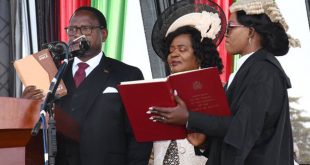
Why coalitions fail in Uganda
In Uganda either the coalitions have fragmented and eventually fallen apart or the numbers just do not add up. In 1996, when the first semblance of democratic elections were held in more than ten years, there was a first attempt at a coalition when the DP and UPC, under a loose federation of the Inter-Party Forces for Cooperation (IPFC) backed the candidacy of Paul Kawanga Ssemogerere.
Although some people were surprised that the two parties had put their bitter rivalry from the 1980 elections aside, they never gave the candidacy of ‘Semo’ as he was known, a chance since the Museveni government was still widely popular. Not surprisingly, Museveni romped to victory with 75%, his highest margin to date.
With Uganda still firmly under the Movement single party dispensation, the idea of a coalition did not seem to have any impact. In the 2001 election, elements within UPC and DP came together to back ‘Reform Agenda’ a pressure group with strong association to Besigye. The pact did not mean much because either parties had candidates; Aggrey Awori and Francis Bwengye respectively attached to them, running in the same election.
The 2006 elections were a different proposition since Uganda had adopted multiparty politics in 2005 and parties had no time for loose pacts since each was testing out its own strength after the “opening up of political space.”
As early as 2008, the Inter Party Cooperation (IPC) was taking shape. It brought together FDC, UPC, DP, SDP and the Conservative Party (CP) but by 2010 had begun to collapse over disagreements ranging from the credibility of the Electoral Commission and who would be its joint candidate. DP and UPC pulled out months to the election leaving FDC with lightweights JEMMA, CP and the SDP. In the end, FDC had to exit an empty coalition and went it alone.
In 2015 as opposition flirted with the idea of a single candidate again, almost the same problems surfaced. Mbabazi was seen as an untested and untrustworthy outsider but more critically, neither he nor Besigye were willing to step down for the other.
Weak political parties
Henry Muguzi, the executive director of the Alliance for Election Campaign Finance Monitoring (ACFIM), an NGO that advocates for increased transparency in political party financing, says the failures of coalitions are rooted in the failure of political parties themselves.
“Most of these parties are major Kampala bubbles and they do not exist outside Kampala,” he explains. “It is only the NRM that is able to field candidates outside of this.”
Muguzi says because of this, many electoral constituencies exist only on paper and this affects a process of forming a coalition. “These parties operate where there is media and where they are seen.”
He adds, “For as long as they do not establish a firm grip at the grassroots level, they will remain weak.”
Frank Rusa, Country Representative of Netherlands Institute for Multiparty Democracy (NIMD), an organisation influential in the national dialogue process, says the lack of issue-based engagements in Uganda’s body politic cannot be ruled out for the failure of coalitions. “It is mostly about who should be the flag-bearer and not about the issues therein. Everybody wants to be a leader, who should be the face?”
****
 The Independent Uganda: You get the Truth we Pay the Price
The Independent Uganda: You get the Truth we Pay the Price



